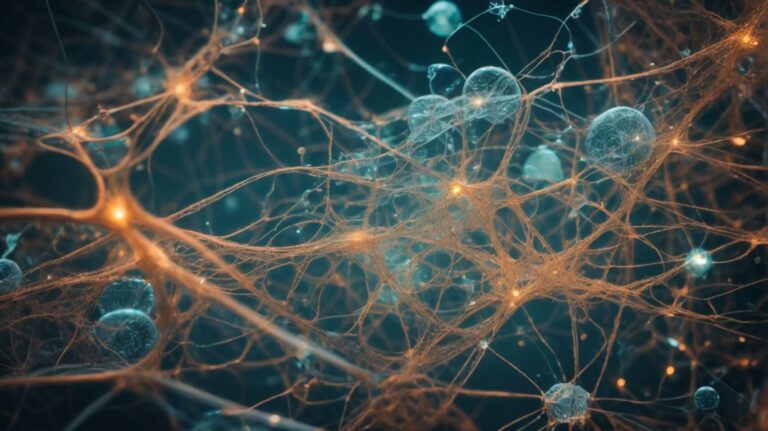Observational learning is a fascinating concept in psychology that sheds light on how individuals acquire new behaviors and skills by observing others. In this article, we will explore the basic components of observational learning, including attention, retention, reproduction, and motivation. We will also discuss the different types of observational learning, such as live model, verbal instruction, and symbolic model. We will delve into the factors that influence observational learning, as well as its applications in various fields such as therapy, marketing, and education. Join us on this journey to understand the intricacies of observational learning in psychology.
Contents
- 1 What Is Observational Learning?
- 2 How Does Observational Learning Work?
- 3 What Are the Basic Components of Observational Learning?
- 4 What Are the Types of Observational Learning?
- 5 What Are the Factors That Influence Observational Learning?
- 6 What Are the Applications of Observational Learning in Psychology?
- 7 Frequently Asked Questions
- 7.1 What is observational learning in psychology?
- 7.2 What are the key components of observational learning?
- 7.3 How does observational learning differ from other forms of learning?
- 7.4 Can anyone engage in observational learning?
- 7.5 What are the benefits of understanding observational learning in psychology?
- 7.6 How can observational learning be applied in real-life situations?
What Is Observational Learning?
Observational learning, as proposed by Albert Bandura, is a form of learning wherein individuals acquire new behaviors, attitudes, or emotional responses by observing and imitating others. This concept is particularly prominent in children, who often model the behaviors of those around them.
Bandura’s theory of observational learning suggests that individuals can learn from their environment through the process of observing others. The role of models is crucial in this type of learning, as they serve as examples for behavior imitation. Children, in particular, are highly influenced by the behavior of their parents, siblings, and peers. For example, a child might learn how to tie shoelaces by watching their older sibling do it.
How Does Observational Learning Work?
Observational learning operates through a series of stages involving attention, retention, reproduction, and motivation. Individuals observe a model’s behavior, retain that information, reproduce the behavior, and are motivated by various factors to emulate or avoid certain actions.
During the initial stage of attention, the individual focuses on the model’s actions, paying close attention to the details of the behavior being demonstrated. This process lays the foundation for further learning as the brain captures the actions and stores them in memory.
Next, in the stage of retention, the individual encodes the observed behavior into memory and rehearses it for future reference. This step involves forming mental representations and utilizing cognitive skills to store the information effectively.
When moving on to the stage of reproduction, the individual converts the stored information into action, mimicking the behavior observed. Through reproduction, the learner refines their skills by practicing and engaging in the demonstrated actions.
Motivation plays a crucial role in observational learning, influencing whether the individual will choose to replicate the behavior. Factors such as reinforcement, internal drives, and social approval contribute to the motivation process, prompting the individual to either adopt or avoid specific behaviors.
What Are the Basic Components of Observational Learning?
The fundamental components of observational learning encompass attention, retention, reproduction, and motivation. These elements play crucial roles in how individuals acquire new behaviors through observation and imitation, with mirror neurons playing a significant part in the process.
When an individual engages in observational learning, the initial step involves attention – the ability to focus on the model’s behavior, whether it is a teacher, peer, or a character in a video. The gathered information is then stored in memory through retention, where it can be retrieved later. Next comes reproduction, where the individual attempts to replicate the observed behavior. Finally, motivation fuels the learning process by influencing the individual’s willingness to perform the behavior. Mirror neurons, specialized cells in the brain, are key in this mechanism, as they activate both when an individual performs an action and when they observe someone else doing it. This mirroring effect aids in the understanding and imitation of behaviors, facilitating observational learning in various social contexts.”
Attention
Attention is a pivotal component in observational learning, where individuals focus on the model’s behavior and relevant stimuli to absorb information effectively.
Attention serves as a filtering mechanism, allowing learners to selectively process valuable information from the environment. Factors such as interest level, novelty of the behavior, and the complexity of the observed tasks play a significant role in enhancing or hindering attention during the observation process.
An individual’s emotional state, physical environment, and previous experiences also influence the level of attention paid to the model and stimuli. By directing attention strategically towards relevant cues and behaviors, learners can maximize their learning outcomes through observational learning.
Retention
Retention involves the process of storing observed behaviors in memory through encoding, allowing individuals to recall and reproduce them at a later time.
Observational learning, a fundamental aspect of social cognition, heavily relies on retention for its effectiveness. Through the retention process, individuals absorb information by observing and encoding behaviors, forming mental representations that are stored in memory.
- Memory processes such as encoding, storage, and retrieval play significant roles in retaining observed behaviors.
- Encoding strategies, like semantic encoding where information is processed for meaning, facilitate better retention.
- Additionally, visual imagery techniques are employed to enhance memory storage of observed actions.
Retention also involves long-term potentiation, the process by which synaptic connections are strengthened through repeated observation, leading to more efficient recall of observed behaviors.
Reproduction
Reproduction entails imitating the observed behavior through practice, where individuals attempt to mimic the actions they have witnessed to learn and internalize the behavior.
Imitation plays a crucial role in observational learning as it allows individuals to model behaviors they observe in others. By engaging in practice to replicate these behaviors, individuals develop and refine their own skills. Through this process, individuals enhance their capabilities by observing, memorizing, and reproducing actions demonstrated by role models or peers. In essence, the ability to accurately emulate observed behavior leads to the acquisition of new skills and knowledge through observational learning.
Motivation
Motivation influences the likelihood of individuals reproducing observed behaviors, with reinforcement or punishment serving as key factors that determine the outcomes of the learning process.
Observational learning, a significant aspect of social learning theory, involves individuals acquiring new behaviors by observing others. Motivation plays a crucial role in this process as it influences whether the observed behavior will be imitated or not. When an individual is motivated, they are more inclined to replicate behaviors they see, especially if the observed person is someone they admire or look up to. Rewards and consequences contribute to shaping this motivation; positive reinforcement enhances the likelihood of behavior replication, while punishment decreases it. Therefore, the interplay between motivation, reinforcement, and punishment is essential in determining the overall effectiveness of observational learning.”
What Are the Types of Observational Learning?
Observational learning manifests in various forms, including learning through a live model’s actions, verbal instructions, or symbolic representations that individuals can observe and emulate.
In terms of learning through a live model, an example could be a child mimicking a parent’s behavior, such as tying shoelaces or cooking a meal. Verbal instructions involve a teacher explaining a concept, like a coach instructing a player on how to shoot a basketball. Symbolic models, like characters in movies or even social media influencers, can influence behavior, such as when a person tries a new hairstyle after seeing it on a celebrity.
Live Model
Learning from a live model involves direct observation of a real-time demonstration where individuals can witness the behavior and its consequences firsthand.
This type of learning is particularly effective in fields like art, sports, and vocational skills where visual demonstration plays a crucial role in understanding the nuances of a technique or practice. For example, in art classes, aspiring painters often benefit immensely from observing a skilled artist create a masterpiece in real-time, allowing them to grasp the brushstrokes, color mixing, and overall composition in a way that textbooks or lectures cannot emulate.
Verbal Instruction
Verbal instruction in observational learning involves individuals receiving guidance or explanations through verbal communication, allowing for the acquisition of new behaviors based on the information provided.
Communication plays a vital role in transferring behaviors from one person to another. Through verbal guidance, individuals can effectively learn by listening to instructions, explanations, or feedback given by an expert or a peer.
Verbal cues can help in shaping behavior as individuals imitate or model the actions or responses demonstrated verbally.
For instance, in a classroom setting, a teacher providing clear verbal instructions on how to solve a math problem can help students understand the process and replicate it themselves.
Symbolic Model
Observational learning through a symbolic model involves learning from representations or media sources that depict behaviors, allowing individuals to emulate these actions through indirect observation.
Symbolic models can range from fictional characters in movies and TV shows to social media influencers who showcase certain lifestyle choices. For example, a child may observe a superhero rescuing others on screen and later pretend to do the same, showing how media representations shape behavior.
This form of learning extends beyond entertainment. In educational settings, virtual simulations and online tutorials act as symbolic models, providing learners with visual cues and step-by-step guides to follow. This method facilitates skill acquisition through visual demonstration, particularly in fields like technology, where hands-on experience may not always be accessible.
What Are the Factors That Influence Observational Learning?
Observational learning is influenced by various factors, including the characteristics of the model, the observer’s attributes, and the consequences associated with the behavior being observed.
When the model being observed possesses traits such as competence, authority, or similarity to the observer, individuals tend to emulate those behaviors more readily. For instance, a child watching a skilled artist paint may be more inclined to practice art themselves.
The observer’s characteristics, such as motivation, attention span, and prior experiences, play a crucial role in determining the effectiveness of observational learning. If an observer is highly motivated to learn a new skill, they are more likely to pay close attention to the model and retain the information.
Characteristics of the Model
The characteristics of the model, including their behavior traits, perceived authority, and relevance to the observer, significantly influence the effectiveness of observational learning.
When the model possesses traits that are desirable or respected by the observer, observational learning becomes more successful. For instance, a child observing a renowned athlete might be more inclined to imitate their behavior due to the model’s high social status and expertise in the relevant field.
The perceived authority of the model plays a crucial role in modeling behaviors. If the observer perceives the model as knowledgeable, trustworthy, or successful, they are more likely to adopt the demonstrated behaviors. An example of this can be seen when individuals emulate health recommendations provided by medical professionals or experts in the field.
Characteristics of the Observer
The observer’s characteristics, such as attention span, cognitive abilities, and past experiences, play a crucial role in how effectively they learn through observation and imitation.
Attention span impacts the duration for which an observer can focus on a task or model, directly affecting the depth of learning. Individuals with a short attention span might struggle to pick up intricate details compared to those with a longer span. Similarly, cognitive abilities, including memory retention and problem-solving skills, shape how well an observer can process and apply the observed information. For instance, a person with higher cognitive abilities may grasp complex behaviors more rapidly.
Consequences of the Behavior
The consequences associated with the observed behavior, whether positive reinforcement or punishment, significantly influence the likelihood of individuals replicating or avoiding those actions.
Positive reinforcement involves adding a pleasant stimulus to increase the probability of a behavior being repeated. This could be a reward like praise or a treat.
On the other hand, punishment aims to decrease a behavior by introducing an adverse consequence. For example, if a student receives detention for talking in class, the likelihood of them talking in class again decreases.
The power of reinforcement and punishment in shaping behavior highlights the importance of understanding the impact of consequences on our actions.
What Are the Applications of Observational Learning in Psychology?
Observational learning finds diverse applications in psychology, including its role in therapy, behavior modification, and the formulation of social learning theories that explain how individuals acquire behaviors through observation.
When applied in therapy, observational learning serves as a powerful tool for individuals to learn new coping mechanisms by watching others navigate similar challenges. In behavior change interventions, therapists often utilize observational learning to model desired behaviors, leading clients to mirror and adopt these actions. This approach can be particularly effective in treating phobias, addiction, and social anxiety disorders.
Within theoretical frameworks, observational learning plays a crucial role in understanding how societal norms, cultural practices, and familial dynamics shape an individual’s behavior. By observing role models and peers, individuals internalize social behavior and norms, contributing to the development of their own identity.
Therapy and Behavior Modification
Observational learning is utilized in therapy and behavior modification strategies by therapists to address phobias, fears, and maladaptive behaviors through observational modeling and reinforcement techniques.
By observing others in a therapeutic setting, individuals can learn new coping mechanisms and behavioral responses. Therapists often use this method to help clients understand alternative ways of reacting to triggers or stressful situations. Through observational modeling, clients can witness constructive responses and learn to emulate them in their own lives. Therapists reinforce positive behaviors that align with treatment goals, helping clients strengthen desirable patterns of behavior while gradually replacing maladaptive ones.
Advertising and Marketing
Observational learning plays a significant role in advertising and marketing, where television programming and media are used to influence consumer behaviors and preferences through observational modeling and persuasive messaging.
In the realm of advertising, observational learning is a powerful tool that leverages the human tendency to observe and imitate. Television commercials and product placements strategically showcase desirable social behaviors, demonstrating how individuals can benefit from using specific products or services. This form of learning through observation not only shapes consumers’ preferences but also influences their purchase decisions.
Advertisers often use celebrities or popular influencers in their campaigns to establish social proof and attract consumers through association. By watching these figures use and endorse products, viewers subconsciously learn to consider those items as desirable and beneficial. Through repeated exposure to certain brand messages during favorite TV shows or online content, viewers gradually internalize these associations, leading to an increased likelihood of engaging with the advertised products or services.
Social Learning Theory
Albert Bandura’s social learning theory emphasizes the role of observational learning in cognitive processes, highlighting how individuals imitate behavior, acquire new skills, and shape attitudes through observation and modeling.
Bandura’s theory suggests that individuals learn not only from direct experiences but also by observing others. By watching a role model demonstrate a particular behavior and observing the consequences of that behavior, individuals may incorporate it into their own repertoire.
Observational learning plays a crucial role in the development of various skills and behaviors. For instance, children often learn how to behave by observing their parents or siblings. This could include learning simple tasks like tying shoelaces or complex behaviors such as handling conflict situations.
- One classic example of this is the Bobo doll experiment, where children observed aggressive behavior towards a doll and replicated that behavior in their play.
- Another illustration can be seen in how individuals adopt communication styles or problem-solving strategies by observing their peers or superiors in different situations.
Parenting and Education
Observational learning principles are instrumental in parenting and education, where children learn from parents, teachers, and peers through observation, imitation, and reinforcement of desirable behaviors.
Parents and teachers play a crucial role in shaping a child’s behavior by modeling positive actions and using reinforcement techniques. When a parent consistently demonstrates manners, such as saying ‘please’ and ‘thank you,’ the child observes and imitates this behavior. Similarly, in educational settings, a teacher who engages students actively during lessons may inspire students to participate more enthusiastically.
Observational learning can also be seen when a child sees a peer being rewarded for sharing and then decides to do the same to earn acknowledgment. This type of learning helps in creating a positive social environment and encouraging desirable behaviors in children.
Frequently Asked Questions
What is observational learning in psychology?
Observational learning is a form of learning where an individual acquires new behaviors or information by observing the actions and outcomes of others.
What are the key components of observational learning?
The key components of observational learning are attention, retention, reproduction, and motivation. Attention refers to paying attention to the model’s behavior, retention involves remembering the behavior, reproduction is imitating the behavior, and motivation is having a reason to imitate the behavior.
How does observational learning differ from other forms of learning?
Observational learning differs from other forms of learning, such as classical and operant conditioning, in that it does not involve direct reinforcement or punishment. Instead, it relies on the observation of others’ behavior and the consequences of that behavior.
Can anyone engage in observational learning?
Yes, anyone can engage in observational learning as it is a natural process that occurs throughout our lives. We are constantly observing and imitating the behavior of others, whether consciously or unconsciously.
What are the benefits of understanding observational learning in psychology?
Understanding observational learning in psychology can help individuals gain insight into how they learn and develop new behaviors. It can also help in understanding how behaviors are acquired and passed down through observation in social groups.
How can observational learning be applied in real-life situations?
Observational learning can be applied in various real-life situations, such as in education, parenting, and therapy. It can be used to teach new behaviors, change unwanted behaviors, and help individuals develop social skills.




